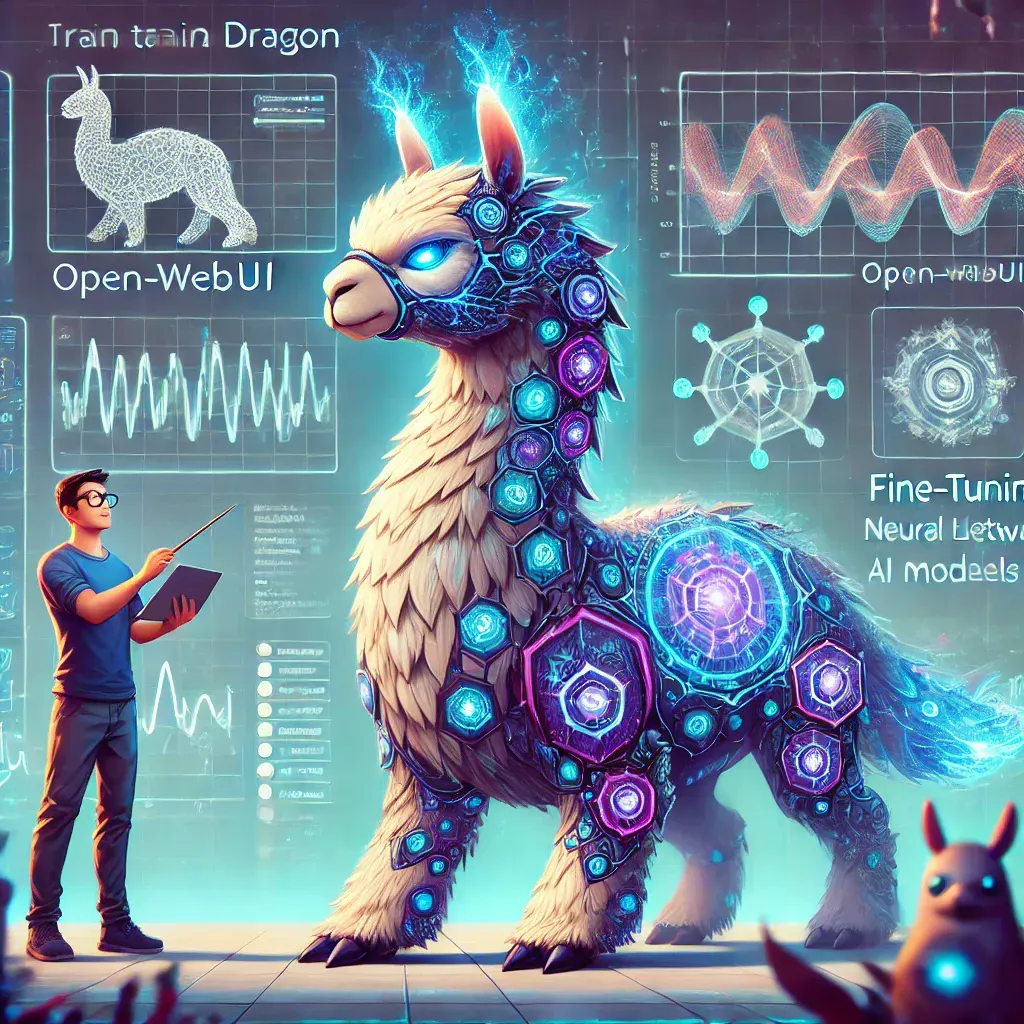How to Train Your LLaMA: Fine-Tuning Models for Ollama & Open-WebUI

Introduction
Just as a dragon needs careful training to reach its full potential, so too does a LLaMA (Large Language Model Meta AI). Whether you're looking to fine-tune an existing model or train one from scratch using Hugging Face, this guide will walk you through the steps to train and deploy your AI model with Ollama and Open-WebUI for seamless local inference.
Why Train Your Own LLaMA?
Training a LLaMA model tailored to your specific needs provides several advantages:
- Customization – Adapt the model to understand industry-specific jargon or unique data sources.
- Performance Optimization – Fine-tune models to be faster and more efficient on your hardware.
- Privacy & Control – Keep AI processing local without relying on external API calls.
- Seamless Integration – Deploy your trained model into Ollama and Open-WebUI for easy interaction.
Step 1: Choosing Your Base Model
To get started, you'll need a base model from Hugging Face. Some popular choices include:
- LLaMA 2 / LLaMA 3 – Meta’s open-weight models designed for efficiency.
- Mistral 7B – An optimized alternative with strong performance.
- Falcon, GPT-J, or BLOOM – Other well-regarded open-source models.
Download a model from Hugging Face using their CLI or Python API:
huggingface-cli download meta-llama/Llama-2-7b-hf
Step 2: Preparing Your Training Dataset
Fine-tuning requires a curated dataset. Good sources include:
- Public datasets from Hugging Face’s Datasets Hub.
- Custom text corpora, including business documents, transcripts, or domain-specific materials.
- Instruction-tuned data if optimizing for chatbot-style responses.
Example JSONL training format:
{"instruction": "Translate the following to French:", "input": "Hello, how are you?", "output": "Bonjour, comment ça va?"}
Convert your dataset into a Hugging Face Dataset object:
from datasets import load_dataset
dataset = load_dataset("json", data_files="training_data.jsonl")
Step 3: Fine-Tuning Your Model with PEFT & LoRA
Fine-tuning a large model from scratch is resource-intensive, so we use Parameter-Efficient Fine-Tuning (PEFT) and LoRA (Low-Rank Adaptation) to optimize for consumer hardware.
Install required dependencies:
pip install transformers datasets peft bitsandbytes accelerate
Run fine-tuning:
from transformers import AutoModelForCausalLM, AutoTokenizer, TrainingArguments, Trainer
from peft import get_peft_model, LoraConfig
model_name = "meta-llama/Llama-2-7b-hf"
model = AutoModelForCausalLM.from_pretrained(model_name, load_in_8bit=True)
tokenizer = AutoTokenizer.from_pretrained(model_name)
peft_config = LoraConfig(r=8, lora_alpha=32, lora_dropout=0.1)
model = get_peft_model(model, peft_config)
training_args = TrainingArguments(output_dir="./fine_tuned_llama", per_device_train_batch_size=2)
trainer = Trainer(model=model, args=training_args, train_dataset=dataset)
trainer.train()
Step 4: Converting the Model for Ollama
Once fine-tuned, convert your model into a format compatible with Ollama for local serving.
ollama create my-llama -f fine_tuned_llama
To test the model:
ollama run my-llama "What is the capital of France?"
Step 5: Deploying to Open-WebUI
Open-WebUI is a great front-end for interacting with locally hosted models.
Install Open-WebUI & Connect to Ollama
- Configure Open-WebUI to use your Ollama model.
- Start chatting with your fine-tuned LLaMA!
Install dependencies and start:
cd open-webui && docker-compose up -d
Clone Open-WebUI:
git clone https://github.com/open-webui/open-webui.git
Conclusion
Training your own LLaMA is easier than ever with Hugging Face, Ollama, and Open-WebUI. By fine-tuning a model with PEFT & LoRA, optimizing for local deployment, and integrating with Open-WebUI, you gain full control over an AI assistant tailored to your needs.
So saddle up and start training your LLaMA today!
